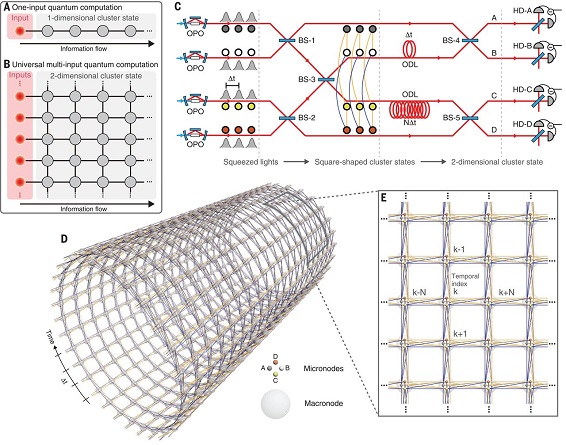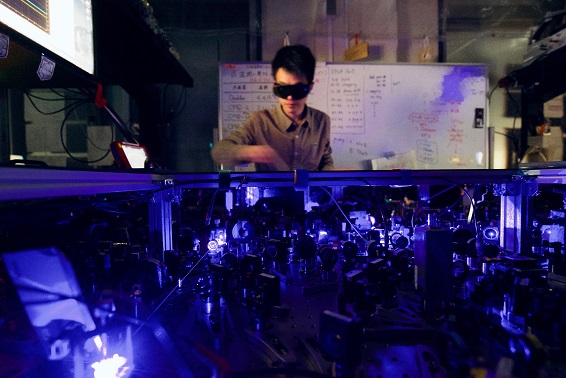Fault-tolerant universal quantum computation requires a universal quantum gate set that can be used to construct arbitrary quantum operations. Moreover, this gate set must be error-correctable and scalable. Circuit model, the current main approach toward quantum computation, implements the computation by directly operating quantum states. This model, however, has been considered to lack the scalability required for the practical quantum computation.
In Furusawa laboratory, we adopt a different approach to optical quantum computation: one-way quantum computation [1, 2]. In the one-way quantum computation, large-scale entanglements called “cluster states” are prepared. Then, constituent qubits of the cluster states are measured according to the operations we wish to implement. Therefore, if we can make large-scale cluster states with an appropriate entanglement structure, we can implement operations via measurements without modifying any physical circuit. Intuitively, cluster states can be understood as a superposition of all possible computational patterns. When we measure the cluster states, we are actually picking out the desired pattern via the collapse of the wave function, a fundamental property of quantum mechanics. To realize the large-scale cluster states, we develop the “time-domain multiplexing” method [3], where we use localized wave packets as our qubits. Using this method, we generate large-scale 1D cluster states which can be used for 1-input 1-output quantum computation [4, 5]. Furthermore, we have also succeeded in generation of 2D cluster states for multi-input universal quantum computation [6]. Although they are known to be a necessary resource for the one-way quantum computation, 2D cluster states have never been realized in any physical system before due to those complexity. In addition to the generation of the cluster states, we will also work on realization of quantum operations using the cluster states by programming the measurement bases and injection of non-classical states to realize the full-fledged optical quantum computer.


- [1] R. Raussendorf and H. J. Briegel, Phys. Rev. Lett. 86, 5188 (2001).
- [2] N. C. Menicucci et al., Phys. Rev. Lett. 97, 110501 (2006).
- [3] N. C. Menicucci, Phys. Rev. A 83, 062314 (2011).
- [4] S. Yokoyama et al., Nat. Photonics 7, 982 (2013).
- [5] J. Yoshikawa et al., APL Photonics 1, 060801 (2016).
- [6] W. Asavanant et al., Science 366, 373 (2019).
